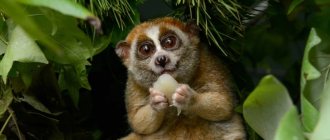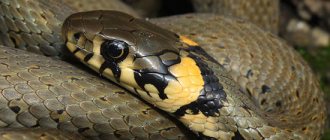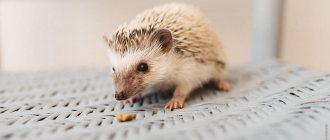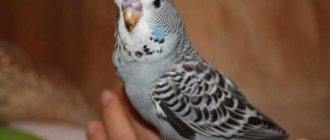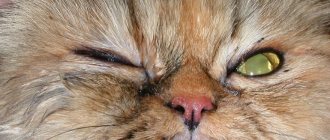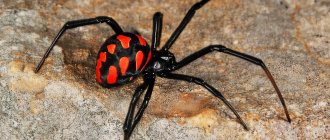- Wild animals
- >>
- Mammals
Lemur loris are small lemurs with huge, pitiful eyes, which have become the cause of numerous expressions of sympathy. A furry little animal (or its look) remains forever in a person’s heart and memory. The extremely lazy creature is one of the oldest mammals on the planet. Scientists are still amazed by the fact that lorises have managed to survive to this day in conditions of fierce animal competition (despite their laziness).
Origin of the species and description
Photo: Lemur lory
Lorises are representatives of the primate family (the most advanced class of placental mammals). The family includes more than 400 species of creatures. It belongs to the animal kingdom, the phylum of chordates, and the subphylum of vertebrates. The distribution area of representatives of primates (except humans) is considered to be predominantly subtropical and tropical regions of North and South America, as well as Asia and Africa. According to historical data, the first primates appeared on earth about 65 million years ago. And the first lemur-like creatures are dated more than 30 million years ago.
Video: Lemur lory
Lory lemurs are close relatives of the galagidae (a family of small primates, numbering about 25 species), with which they form the infraorder Lorisiformes. The current number of lemur species has exceeded one hundred.
Lemurs are divided into the following types:
- slender loris;
- lemur loris (or slow loris);
- dwarf or small loris.
Animals are classified according to their size and weight.
Interesting fact: Until 1766, lorises belonged to the group of sloths (due to the peculiarities of their life activity). J. Buffon classified these animals as lemurs. Zoologists classify them not as lemurs, but as primates. However, the name “Lemur Lori” is firmly attached to the animal.
Aye-aye from Madagascar
The Madagascar bat, an animal with large eyes and ears, also belongs to the order of primates and is the only species of the family of bats.
The Madagascar monkey has small sizes (36-44 cm), a long fluffy tail that exceeds the body size by 15-20 cm, and dark brown fur. The head of the aye-aye is quite large, with large hairless ears located on it.
Huge, constantly surprised eyes, large front teeth, huge movable ears and elongated toes earned her the nickname Aye-aye.
The aye-aye is found only on the island of Madagascar, in bamboo thickets or dense forests.
Appearance and features
Photo: Lemur loris in nature
The popularity of furry animals around the world is caused by their amazing appearance. The main feature of the loris is its large, expressive eyes, evoking sympathy and pity. At the same time, the animals’ ears are very small and practically invisible. Lemurs of this class resemble a cross between monkeys and sloths (they are often called “semi-monkeys”).
Key appearance features include:
- wool - very soft and fluffy wool;
- color - usually reddish-brown or brown;
- fingers - the thumbs are opposed to the others, which belong to vestigial organs;
- limbs - the forelimbs are significantly longer than the hind limbs;
- the tail is an element of the segmented body of animals that is quite long;
- Dimensions - the minimum body length of an adult is 15 centimeters, the maximum is 40 centimeters, while the weight of the animals varies from 250 grams to 1.5 kilograms.
The color and thickness of the coat, as well as the general characteristics of appearance, largely depend on living conditions, timely care and nutrition.
Interesting fact: The eyes of the loris are surrounded by a frame that resembles glasses. Thanks to this feature, the animals are often associated with a clown. By the way, translated from Dutch “Loeris” means “clown”.
What does a galago look like?
The body of the animals is elongated, its length, depending on the species, ranges from 11 to 35 cm, the length of the tail is 14-42 cm, the weight is 60–1200 g. The head is rounded, the facial section is greatly shortened. The color of the soft, thick fur varies from light gray to brown, the sides and limbs are lighter, with a yellowish tint.
Huge saucer eyes see perfectly in the dark. Between the retina and the vascular layer of the eye there is crystallin, which reflects light passing through the retina, increasing the light sensitivity of the eye. But unlike diurnal primates, galagos have poor color vision.
The ears are very large. Interestingly, the animal’s ears can move independently of each other, and also curl up to avoid damage.
The hind limbs are longer than the forelimbs, the foot is greatly elongated. The fingers are equipped with nails, with the exception of the second finger of each limb. A “cosmetic” claw grows on this finger, which is used by the animal to care for its fur.
Galagos have the structure of their lower teeth characteristic of lower primates. The lower incisors and similar canines form a tooth comb protruding forward. This adaptation plays an important role in eating insects and gum. There is a cartilaginous brush on the underside of the tongue. Penetrating into the crevices of the tooth comb, it cleans out various small particles from there.
In galagos, like Loriids, there is a bone in the penis, and backward-pointing spines no more than 2 mm long protrude from the skin at its end. This promotes long-lasting mating and ensures its success. The penis bone and spines vary between species, preventing interspecies interbreeding.
Where does the loris lemur live?
Photo: Indian lemur loris
The animals are native to India (a country in South Asia) and Sri Lanka (or Ceylon, an island state). Today you can meet representatives of this group of lemurs in:
- Central Africa is a part of Africa located on the equatorial and subequatorial strip. The territory is distinguished by a large number of savannas and gallery forests (where loris lemurs live);
- South Asia is a part of Asia that includes Sri Lanka, Hindustan, the Indo-Ghana lowland and other smaller islands;
- Southeast Asia is a macro-region located between India, China, Australia and Japan.
Favorite habitats of animals are: the island of Java, regions of Cambodia and Vietnam, the northeastern regions of India, Bangladesh, northern China, Sumatra, the Philippines, Borneo and other tropical parts of the above regions.
Interesting fact: Early loris could be found in Madagascar, as well as in some arid regions of Africa. Due to the extreme decline in numbers, the animals no longer live in these regions.
All representatives of the lemur order live in tropical forests. Only here the most comfortable conditions for their life have been created - a large number of trees (for living), fertile plant crops (for food).
Now you know where the loris lemur lives. Let's see what he eats.
What does the loris lemur eat?
Photo: Lemur loris from the Red Book
Loris lemurs eat both plant and animal foods. However, most animals prefer plant fruits. This is due to their laziness and lack of sufficient hunting opportunities. Small individuals are content with flower pollen; adult representatives can dine on tree bark or its resinous secretions.
Basically, all lorises feed on bamboo shoots, coconut milk, dates, bananas, leaves of various trees and other fruits. At the same time, some individuals (more active) supplement their main diet with insects, small lizards, chameleons and frogs. Observations of these cute animals showed that they can quite easily dine on small birds or their eggs.
Interesting fact: Many people believe that loris eat exclusively bananas. This is wrong. These fruits are classified as sweets and are consumed by animals much less often than others. For lemurs, bananas are more of a treat than a daily meal.
A vegetable diet rarely provides significant energy replenishment. In this regard, the animals lead a passive lifestyle. In an unnatural habitat, loris are fed with boiled and chopped bird meat, vegetables (heat treatment is optional), mushrooms, seafood and insects. Sweet fruits are a delicacy for the animals living in the zoo (this is due to concern for the health of lemurs and maintaining their natural sugar level). In foreign menageries, lorises feed on specialized mixtures containing all the microelements necessary for normal life and stable well-being.
Interesting facts about the animal
- There is a belief that lorises have healing powers that can heal fractures and other diseases in humans.
- Hunters in some countries believe that when they saw a slow loris, it meant bad luck in their hunt.
- Slow lorises closely resemble sloths.
- In the zoo or in captivity they practically do not reproduce, so the species is on the verge of extinction.
- Loris give birth to either one or a pair of babies.
- The animals mark their territory with urine.
- Animals eat small birds.
Features of character and lifestyle
Photo: Lemur lory
Loris have absorbed the life characteristics of sloths and monkeys. These little animals are extremely lazy. They behave very calmly, thinking about every step (which is what causes excessive slowness). Animals can remain motionless for a very long period (most often this happens for the purpose of protection from a predator).
Cute and fluffy lemurs are active only at night. During the day, the animals sleep and replenish their energy. At dusk, lorises go hunting for fruits and small insects. At the same time, they do not jump between trees, but carefully move from branch to branch (with the help of tenacious fingers and tail). Impeccable orientation in the dark is possible thanks to the animals’ acute hearing and special vision.
Lemurs live both alone and in groups. They approach the choice of partners extremely carefully. Not every candidate becomes a full member of the couple. Families are formed from one male and several females. Its representatives live in close proximity to each other. It is important that Loris do not tolerate bright light. Therefore, if you somehow end up with this animal at home (despite the ban on keeping it at home), provide it with dim lighting.
When hunting and colliding with other representatives of animal fauna, lorises make quite loud sounds. They sound like chirping sounds as well as snoring sounds. When threatened seriously, they begin to bite their offender. In extremely dangerous situations, they hit the enemy with their elbows, which contain strong poison. Animals resort to this method extremely rarely.
Interesting fact: Under poor conditions (sharp climate change or lack of food), lorises hibernate.
Under normal conditions and with proper care, the animals are quite curious and playful. In zoos they do not hide or run wild. However, at home (if not kept correctly), animals become withdrawn and embittered.
Lifestyle
These cute, bug-eyed babies are actually predators. A hungry tarsier sits motionless, waiting for prey. As soon as it sees its potential prey (lizard, insect or frog), it makes one long leap and captures the prey with amazing accuracy with its front paws. And then he proceeds to dinner, gnawing the victim with sharp fangs.
Tarsiers are also not averse to eating fish, crabs or crayfish.
The animals move quickly and silently through the trees, and rarely descend to the ground.
Tarsiers do not live in captivity. They are too freedom-loving and even in the zoo they cannot find a place for themselves, trying to break free, even at the cost of their lives.
Social structure and reproduction
Photo: Baby loris lemur
By the age of one and a half years, male loris lemurs are ready to reproduce new offspring. Sexual maturity of females occurs a little later - at two years. In this case, pairs do not form immediately. The male and female are selective in choosing a partner, choosing “the one.” After direct fertilization, pregnancy occurs, which lasts a little more than 6 months. At one time, a female can give birth to no more than 2 cubs. Lemurs are born with their eyes open and covered with sparse fur. They immediately cling with strong fingers to the mother’s stomach, where they spend the first one and a half to two months of their lives.
Interesting fact: Baby lorises do not sit still on their mother. They often wander between their parents, as well as other family members, clinging to the thick fur of their “relatives.” At the same time, they periodically return to their mother for feeding.
The female feeds her cub with milk for 2 months. The father also takes care of the children. Both parents support the child until he is fully grown (which usually happens at one to one and a half years). The animals live up to 14 years in natural habitats. At the same time, with artificial life support, the age can be increased to 25 years.
Interesting fact: In 2013, a Russian citizen was detained for trying to resell a loris animal. He was sentenced to an administrative fine of 2.5 thousand rubles. The animal itself was confiscated. Detailed information can be found on the Internet. Case No. 5-308/14 is made available in the public domain.
Diet
These fat, at first glance, clumsy animals set out to get food right after sunset - and literally before our eyes they turn into dexterous hunters, moving very carefully and carefully. The leaves through which they make their way barely move.
They feed on tree resin, fruits, flower nectar, bird eggs, insects and spiders. In addition, they catch invertebrates, small birds and rodents. And they love to eat it all, often hanging upside down.
Be careful - poison!
The most interesting feature of the animal is its poisonousness. Science knows only seven species of such mammals. Its poison is secreted by a special brachial gland, which is located on the elbow. The animal smears it on the head while making a marafet, scaring away predators and parasites. Venom can also enter the mouth, making animal bites extremely dangerous.
The poison of this animal is not as terrible as it seems at first glance. For example, there is a known case when a young woman, being four months pregnant, was bitten by it in the zoo - and complained only of acute pain from her teeth.
In any case, the process of this animal secreting poison is in itself very interesting and educational. The gland with poison begins to actively function in the slow loris at a rather tender age - starting from six weeks. These animals coat themselves with poison even when there is no visible danger; they constantly lick the elbow gland and wipe their heads on it.
The release of a toxic substance increases sharply if the animal is disturbed. He immediately takes a protective pose, tilts his head down, and raises his front paws towards his head, while an absolutely transparent, smelly liquid (about ten microliters), which also contains an allergen, begins to be released from the gland. He begins to vigorously rub this liquid into the head and neck, discouraging the predator from wanting to feast on it.
The slow loris also has extremely sharp teeth, which, due to its habit of constantly licking the ulnar gland, contain traces of poison.
Its bite is somewhat reminiscent of an injection, only very painful and with worse consequences. The victim quickly falls into anaphylactic shock (the so-called extreme manifestation of an allergic reaction). After a bite, its victims, in particular people, almost always come to their senses and recover.
Such a unique feature of the animal could not help but attract the attention of scientists who began to closely study this phenomenon. And they came to the conclusion that secretion from the gland may be the body’s reaction to danger and fear.
Natural enemies of loris lemurs
Photo: Lemur loris in nature
The worst predators that are dangerous to loris lemurs include:
- Hawks are large birds of prey from the hawk family. They pose a danger mainly to small individuals of loris. They are considered one of the main predators capable of killing loris when they live in a tree. Due to their slowness and caution, lemurs rarely catch the eye of flying enemies. But it’s hard for defenseless cubs to hide from the eyes of a hawk;
- pythons are representatives of non-venomous snakes. Such enemies hunt down prey, strangle it and consume it without dividing it into parts. Such a predator is dangerous for lemurs that descend to the ground in search of food;
- orangutans are great apes. Thanks to their ability to skillfully move along branches, these individuals amaze lemurs in their natural environment - in trees. In addition, they hunt on the ground, thereby surrounding the animals from all sides. Orangutans are considered the main enemies of the cute and fluffy lorises.
Mostly hunting for lemurs is carried out at night - when the animals begin to be active. Movements and transitions between trees give the lorises away, making them visible to predators.
One of the worst enemies for animals is man himself.
The following human activities kill the loris:
- deforestation - people deprive lemurs of their homes;
- environmental pollution - the consequence of global waste emissions is not only the deterioration of plant growth, but also the death of lemurs;
- catching animals - recently it has been very fashionable to acquire unusual pets;
In addition to the main enemies, any predators can pose a threat to the loris. This happens at those moments when the lemurs descend to the ground. Because of their slowness, they cannot quickly escape from an attacker, which is why they are considered quite easy prey for the inhabitants of tropical forests.
Nutrition
Under natural conditions, the menu of the lemur loris is quite varied and consists of lizards, small birds and their eggs, and insects. Lemurs do not disdain various poisonous caterpillars, and consider tree resin as a delicacy.
The slowness of animals does not always allow for a full-fledged hunt, and often the prey manages to escape from the tenacious clutches. Therefore, a significant part of their menu is occupied by plant foods - flowers, leaves and fruits growing on trees. Animal droppings spread plant seeds.
The diet of a domesticated pet includes:
- Fruits - pear, apple, melon or papaya, banana (excluding overripe ones), kiwi.
- Raspberries and cherries.
- Quail eggs.
- Special insects for feeding, purchased at a pet store.
- Carrots and cucumbers.
You can supplement your diet with baby cereals, purees and cottage cheese, as well as homemade crackers, dried fruits, nuts, biscuits, freshly squeezed juices, and honey. However, these products should never be abused, since systematic improper feeding of the animal and stressful situations contribute to the development of diabetes. Without appropriate treatment, the pet's death occurs very quickly.
A tamed pet pleases by accepting treats directly from the hands of its owner.
Population and species status
Photo: Cute loris lemur
Scientists do not undertake to indicate the exact number of loris lemurs living in forests today. This is caused by their wide distribution and constant change (both up and down). But due to the fashion for domesticating such pets, their numbers are significantly reduced. This is confirmed by reliable data from zoological services. People buy these animals on black markets for thousands of dollars.
The choice of such a pet is obvious, because the loris:
- very quiet animals that make sounds only when there is a real threat to their life;
- have hair that does not cause allergies;
- communicate well with other pets without posing a threat to them;
- do not have an unpleasant odor and rarely require bathing;
- They are distinguished by their nails not requiring regular trimming, and lazy animals do not use them to damage their owners’ furniture.
It is because of such advantages that the animals die. In captivity (at home) they barely live to be 5 years old. This happens due to the basic illiteracy of their owners and the lack of any desire to create the necessary conditions for lemurs.
Scientists started talking about the problem of the rapid disappearance of a large number of loris representatives 2-3 years ago. However, today the situation has become critical. Due to the decline in the number of lemurs, the sale of representatives of this species was completely prohibited. Unfortunately, state laws banning the catch and sale of lorises do not stop the indigenous residents of the countries where the animals live. For one representative you can get at least 1.5 thousand dollars on the black market. Therefore, the lemur fishery continues to this day.
Unusual abilities
This amazing animal with big eyes also has a number of extraordinary abilities:
- They are able to turn their heads 180 degrees due to the special structure of their spine.
- The fingertips have suction pads that allow them to stay on tree trunks and branches for a long time.
- The tarsier's eyes are designed in such a way that the animal sees perfectly both at dusk and in bright light.
- During the flight when jumping (and it can have a range of up to two meters), the tarsier can “steer” with its tail, ensuring precision landing.
